Introduction
Hey there, fellow rabbit enthusiasts! If you’re like me, there’s nothing more enchanting than watching baby rabbits grow from their hairless, vulnerable state to becoming adorable, furry balls of joy.
we’ll take a deep dive into the development of fur in newborn rabbits, exploring their timeline from birth to fluffiness.
From the moment they enter this world, newborn rabbits are born naked, completely devoid of fur. It’s hard to imagine these little bundles of joy without their signature soft coats, but trust me, they do grow into them!
It’s remarkable to witness how rapidly these tiny creatures develop.
As days pass, their fur evolves, becoming denser and longer. The colors become more vibrant and defined, showcasing the unique markings that will characterize each individual.
Their once delicate skin is now covered in a thick and fluffy coat, providing optimal protection and insulation.
Understanding the fur growth process is not only a fascinating journey, but it also plays a crucial role in caring for baby rabbits. Proper nutrition, maintaining a suitable living environment, and regular health monitoring are key to ensuring their fur develops healthily.
So, join me as we embark on this adventure of fur growth in baby rabbits. Let’s appreciate the wonders of nature and marvel at the incredible transformation these adorable creatures undergo.
Stay tuned!
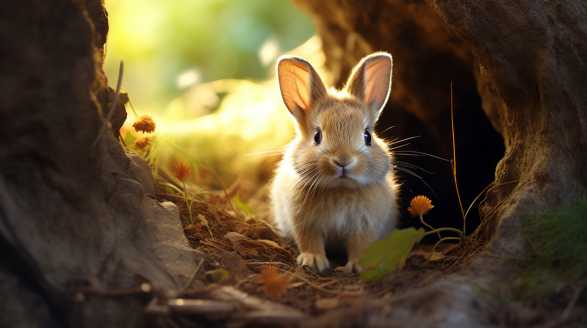
Key Takeaways
- Baby rabbits are born naked, but their fur starts to develop within the first few days of their lives.
- The fur growth process involves the formation of wooly guard hairs, followed by the emergence of soft underfur.
- The fur provides essential functions such as thermoregulation, camouflage, and protection for baby rabbits.
- Different fur types and colors are found in baby rabbits, depending on their breed.
- Proper nutrition, a suitable living environment, and regular health monitoring are crucial for healthy fur growth.
- The fur growth process takes several weeks and varies depending on the breed and individual genetics of the rabbits.
- Caregivers should groom the rabbits regularly, provide a balanced diet, and maintain a clean living environment for optimal fur growth.
- Understanding the fur growth process allows us to appreciate the remarkable transformation that baby rabbits undergo.
The Development of Fur in Newborn Rabbits: A Timeline
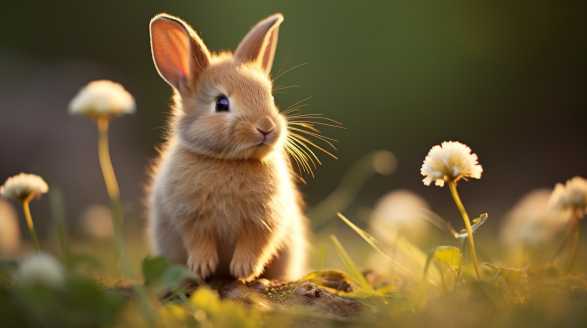
When it comes to the adorable creatures that are newborn rabbits, their journey from little bundles of joy to furry companions is truly fascinating. As a rabbit enthusiast, I have delved deep into the intricacies of their development, particularly focusing on how their fur evolves over time.
The Birth of Fluffiness: Day 1
The first day of a rabbit’s life is a true wonder. Newborn rabbits, also known as kits, come into this world blind, hairless, and completely dependent on their mother for survival.
The Bare Necessities
- Kits are born without fur, but their skin is warm and lined with fine, short hair.
- The absence of fur exposes their delicate pink skin, making it vital to keep them warm.
Embracing Change: Day 2-4
It is during the second to fourth day of a rabbit’s life that their fur development starts to take shape. It is remarkable how rapidly these little creatures evolve.
Taking the First Steps: Day 5-7
By day 5, something magical begins to happen to the kits. Their fur coats start forming, giving them a more identifiable appearance.
The Starter Fur Kit
- Around this time, the kits’ fur starts to sprout on their heads and bodies, primarily in a lighter shade.
- The fur has a wool-like texture and is still quite thin, but its emergence brings a newfound sense of warmth and protection.
Fur-ther Growth: Day 8-10
As the kits continue to grow, their fur development accelerates, unveiling even more intriguing changes.
The Color Palette Unveiled
- At this stage, the fur begins to darken, revealing some of the distinct colors and patterns specific to the breed.
- However, the kits’ fur still lacks the fullness and length that will come with time.
Thriving Under Mom’s Care: Day 11-14
Between days 11 and 14, the kits’ fur goes through significant developments. The colors become more vibrant and defined, and one can’t help but marvel at the wonders of nature.
A Coat of Many Colors
- By this stage, the kits’ fur has acquired a more uniform appearance throughout their bodies.
- The color patterns become more discernible, showcasing the unique markings that will characterize the individual kits.
Approaching Full Furriness: Day 15-18
Around day 15, the kits approach the peak of their fur development journey – they are becoming the bunnies we all know and love.
The Fuzzball Evolution
- At this stage, the kits’ fur becomes denser and longer.
- Their bodies are now covered in a thick and fluffy coat, offering increased protection and insulation.
- The fur is no longer simply a feature, but a defining characteristic of their adorable appearance.
The Transformation Complete: Day 19-21
By the time the kits reach day 19, their incredible transformation into fully-furred rabbits is nearly complete. They have come a long way from their hairless beginnings and are now ready to hop into the world.
Ready for the World
- At this stage, the kits’ fur has taken its final form, resembling that of adult rabbits.
- The fur is dense, soft, and fluffy, providing optimal protection from the elements.
- Kits are now less reliant on their mother’s warmth, as their fur acts as a natural coat.
Witnessing the development of fur in newborn rabbits is nothing short of a marvel. From their hairless state at birth to their fluffy debut, these little creatures undergo a journey of growth and transformation.
So, the next time you find yourself captivated by the appearance of a newborn rabbit, take a moment to reflect on their remarkable path to fluffiness.
Caring for Baby Rabbits During their Fur Growth Stage
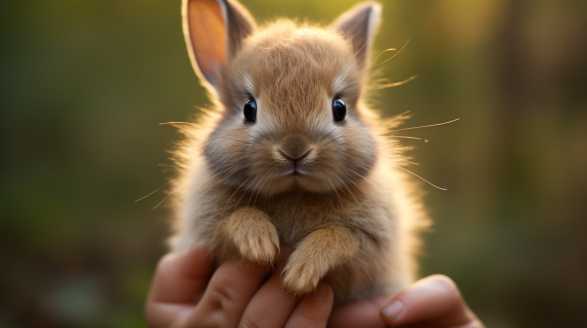
As a proud owner of baby rabbits, I know firsthand the joy and responsibility that comes with caring for these adorable little creatures. One crucial stage in their development is when their fur starts to grow.
I will share with you everything I have learned about caring for baby rabbits during their fur growth stage, providing you with valuable insights to help you through this journey.
Understanding the Fur Growth Stage
The fur growth stage is a critical time for baby rabbits, as it marks the transition from their delicate baby fur to their adult coat. This period typically occurs between 3 and 6 weeks of age, but it can vary depending on the breed.
Signs of Fur Growth
To provide proper care during this period, it is essential to recognize the signs that indicate your baby rabbits are undergoing fur growth. Some common signs may include:
- Increased grooming by the mother rabbit: The mother rabbit will intensify her grooming efforts to help stimulate hair growth in her babies.
- Changes in fur color and texture: You may notice subtle changes in the color and texture of your baby rabbits’ fur as they develop.
- Shedding of baby fur: As the adult coat starts to grow, the baby fur will shed, making way for the new and more mature fur.
- Increased activity and exploration: Baby rabbits may become more active and curious during this stage, exploring their surroundings in search of new experiences.
Providing Optimal Nutrition
Proper nutrition plays a crucial role in promoting healthy fur growth in baby rabbits. As their caregiver, it is your responsibility to ensure they receive a balanced and appropriate diet.
Mother’s Milk
During the initial weeks of their life, baby rabbits primarily rely on their mother’s milk for sustenance. The mother’s milk is rich in nutrients necessary for their growth and development.
Once the baby rabbits are around 2 to 3 weeks old, you can gradually introduce solid foods to their diet. Start by offering fresh hay, high-quality rabbit pellets, and small amounts of fresh vegetables.
Water
Providing clean and fresh water is crucial for baby rabbits’ overall health and proper fur growth. Ensure that a shallow and easily accessible water bowl is available in their enclosure at all times.
Maintaining a Suitable Living Environment
Creating a suitable living environment for your baby rabbits is vital to their well-being, especially during the fur growth stage. Here are some crucial factors to consider:
Temperature and Humidity
Maintaining optimal temperature and humidity levels is essential to avoid any discomfort or health issues for your baby rabbits. Keep their enclosure in a temperature-controlled area, ideally around 60°F to 70°F (15°C to 21°C), and ensure the humidity stays within the recommended range for their breed.
Comfortable Bedding
Provide your baby rabbits with a comfortable and safe bedding option. Avoid using pine or cedar shavings, as they can be harmful to their sensitive respiratory systems.
Appropriate Enclosure
Ensure that the enclosure for your baby rabbits allows sufficient space for movement and exploration. A wire cage with a solid bottom or a puppy pen with ample ventilation serves as a suitable option.
Stimulation and Socialization
Baby rabbits thrive on mental and physical stimulation during their fur growth stage. Provide them with toys and objects they can chew on to keep them stimulated.
Regular Health Monitoring
Regular health monitoring is essential to ensure that your baby rabbits are growing and developing properly. Here are some key aspects to keep an eye on:
Weight Gain
Weigh your baby rabbits regularly to monitor their weight gain. A healthy rabbit should exhibit steady weight gain, indicating proper nutrition and growth.
Eyes and Ears
Check your baby rabbits’ eyes and ears for any signs of infection or discharge. Healthy rabbits should have clear and bright eyes, and their ears should be clean and free from any debris or excessive wax buildup.
Fur Condition
Inspect your baby rabbits’ fur regularly during the fur growth stage. Look for signs of matting, excessive shedding, or any abnormal fur loss that may indicate underlying health problems.
Vet Care and Vaccinations
Regular veterinary care is crucial in ensuring the optimal health of your baby rabbits. Consult a veterinarian experienced in rabbit care to establish a vaccination schedule and discuss any concerns or questions you may have.
Caring for baby rabbits during their fur growth stage requires dedication, attentiveness, and a deep understanding of their needs. By following the guidelines provided in this article, you can ensure that your baby rabbits have the best possible care during this critical period of their development.
With your love and care, your baby rabbits will grow into healthy and happy adult rabbits, rewarding you with endless joy and companionship.
The Importance of Fur for Baby Rabbits’ Survival
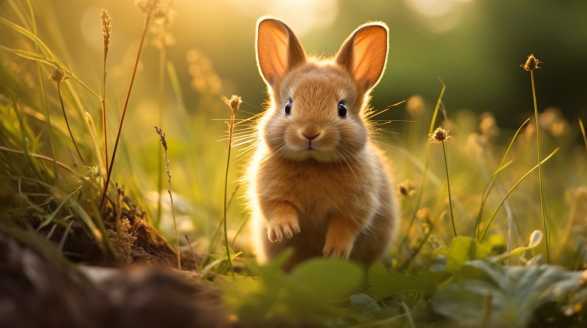
As a rabbit enthusiast, I am often amazed by the remarkable abilities of these adorable creatures. One aspect that particularly intrigues me is the importance of fur for the survival of baby rabbits.
Join me as we dive into the fascinating world of baby rabbits and explore why their fur is of utmost importance.
Why is Fur Important for Baby Rabbits?
Fur serves multiple essential functions for baby rabbits, ensuring their survival and well-being from birth. Let’s explore each of these functions in detail:
- Thermoregulation: Newly born rabbits are unable to regulate their body temperature effectively. Their fur acts as a natural insulation, keeping them warm during chilly nights and protecting them from the scorching heat of the sun.
- Camouflage: The fur of baby rabbits helps them blend seamlessly with their surroundings, providing them with a defense mechanism against predators. This camouflage allows them to stay hidden and increases their chances of survival in the wild.
- Protection: The coat of fur serves as a protective layer, shielding baby rabbits from injuries and external elements. It acts as a barrier against sharp objects, thorny bushes, and even rain, ensuring their fragile bodies remain safe.
Fur Types in Baby Rabbits
Baby rabbits come in various breeds, and each breed has its own distinctive fur characteristics. Some common types of fur found in baby rabbits include:
1. Angora Fur
- Long, silky, and soft fur
- Requires regular grooming to prevent matting and dirt buildup
- Provides exceptional warmth
2. Rex Fur
- Short and dense fur with a velvety texture
- Low maintenance and resistant to matting
- Ideal for colder environments due to excellent insulation properties
3. Dutch Fur
- Dense and shiny fur
- Requires regular grooming to maintain a healthy coat
- Good insulation properties
4. Lionhead Fur
- Thick, wool-like fur around the head, resembling a lion’s mane
- Regular brushing is necessary to prevent matting
- Provides good insulation
Each fur type has its own advantages and requirements, but regardless of the breed, fur is crucial to the survival of baby rabbits.
The Fur Development Process
Baby rabbits are born with a layer of fur, but it undergoes remarkable changes as they grow. Understanding the stages of fur development in baby rabbits shed light on the importance of this process:
1. Birth Fur
- This is the initial fur that covers baby rabbits at birth.
- It is typically shorter, thin, and less developed, but serves its purpose.
- Birth fur aids in temperature regulation and offers minimal protection against the environment.
2. Transitional Fur
- As baby rabbits progress from birth to adulthood, they experience a transitional phase where their fur changes.
- During this stage, the fur becomes thicker, longer, and starts to resemble the coat they will eventually have as adults.
- Transitional fur provides increased insulation and defense against external elements.
3. Adult Fur
- Adult fur is the final stage of fur development in rabbits.
- It is fully developed, providing maximum insulation, protection, and camouflage abilities.
- The quality of adult fur varies depending on the breed, with some rabbits boasting lustrous, long fur, while others have shorter, denser coats.
Fur Maintenance in Baby Rabbits
As baby rabbits grow, their fur requires proper attention and maintenance to ensure it remains healthy and functional. Here are some essential tips for maintaining baby rabbits’ fur:
1. Grooming
- Regular grooming sessions are essential to remove any dirt, debris, or tangles from their fur.
- Use a soft brush or comb to gently untangle knots without causing discomfort to the rabbit.
- Pay special attention to long-haired breeds that are more prone to matting.
2. Diet and Nutrition
- A balanced diet plays a crucial role in maintaining the health and quality of a rabbit’s fur.
- Provide a diet rich in hay, fresh vegetables, and rabbit pellets, as this promotes healthy fur growth.
- Ensure they have access to fresh water at all times.
3. Living Environment
- Create a clean and spacious living environment for baby rabbits.
- Regularly clean their living space to prevent the buildup of parasites, dirt, or urine that can affect their fur’s cleanliness and health.
The importance of fur for baby rabbits’ survival cannot be overstated. From thermal regulation to protection and camouflage, fur is an essential attribute that ensures their well-being in the wild.
As we continue to marvel at the fascinating world of baby rabbits, let’s embrace the marvel of their fur and its significance in their remarkable journey.
From Naked to Fuzzy: Understanding the Fur Growth Process in Baby Rabbits
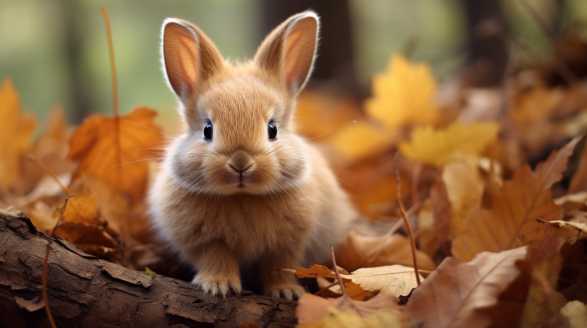
As an avid rabbit enthusiast, I have always been fascinated by the transformation baby rabbits go through during their fur growth process. The journey from being completely naked to developing a soft and fuzzy coat is nothing short of amazing.
A Naked Beginning
When baby rabbits are born, they come into this world completely naked. They lack any fur, making their tiny bodies appear vulnerable and exposed.
The Formation of Wooly Guard Hairs
Within the first few days of their lives, baby rabbits start to develop guard hairs. These guard hairs are the foundation of their future fur coat.
Soft Underfur Emerges
The next phase in the fur growth process begins when soft underfur starts to emerge. This underfur, also known as the wool coat, is incredibly soft and provides warmth and comfort to the little bunnies. It acts as an insulator, keeping them cozy and protected from the cold.
The Role of Guard Hairs
The guard hairs play a crucial role during this phase. They act as a shield, covering and protecting the delicate underfur beneath.
It is also the time when the baby rabbits’ fur starts developing its characteristic color.
Color Development
The color of a baby rabbit’s fur begins to reveal itself during the fur growth process. Some baby rabbits are born with a slight tint of color, while others experience a more dramatic color change as they mature.
Shedding the Nest Coat
As baby rabbits’ fur growth progresses, they eventually shed their initial “nest coat.” This coat served them well during their first days, providing warmth and protection.
The process of shedding this coat is gradual and occurs naturally as the new fur takes its place.
The Final Touch: Fuzziness and Softness
The final stage of the fur growth process is when baby rabbits transform into adorable, fuzzy bundles of joy. Their once naked bodies are now adorned with a thick and luxurious coat. The softness of their fur is a delight to touch, making them irresistible to snuggle with.
How Long Does the Fur Growth Process Take?
The fur growth process in baby rabbits varies based on breed and individual genetics. It generally takes several weeks for the transition from naked to fuzzy fur.
It’s essential to remember that each baby rabbit has its own unique timeline.
Caring for Growing Fur
As a rabbit owner, it’s important to provide proper care to support the fur growth process. Here are some essential tips to keep in mind:
- Maintain a clean and hygienic living environment to prevent fur-related issues.
- Provide a balanced diet with adequate nutrition to promote healthy fur growth.
- Regularly groom the baby rabbits with a soft brush to remove any loose fur and prevent matting.
- Pay attention to any signs of abnormal fur growth or thinning, as it may indicate underlying health problems.
Understanding the fur growth process in baby rabbits allows us to appreciate the remarkable journey they undertake. From their humble beginnings as naked newborns to becoming fluffy and adorable creatures, the stages of fur development are a testament to nature’s incredible design.
Witnessing these little creatures transform into fuzzy bundles of joy is a heartwarming experience that deepens our appreciation for these wonderful animals.
Conclusion
In conclusion, the development of fur in baby rabbits is a truly remarkable journey. From their initial naked state to the emergence of their soft and fluffy coats, every stage of fur growth is a testament to the wonders of nature.
As I delved into the timeline of fur development in newborn rabbits, I gained an even deeper appreciation for their growth process. From their birth fur to the formation of guard hairs and the emergence of soft underfur, each step plays a vital role in providing warmth, protection, and insulation for these adorable little creatures.
Caring for baby rabbits during their fur growth stage is essential to ensure their health and well-being. By providing proper nutrition, maintaining a suitable living environment, and monitoring their health regularly, we can support their fur growth and contribute to their overall development.
Through understanding the importance of fur for baby rabbits’ survival, we can appreciate the significance of this feature in their lives. From thermoregulation and protection to camouflage, their fur equips them with essential tools for survival in the wild.
In conclusion, the fur growth process in baby rabbits is a journey filled with wonder and amazement. From their hairless beginnings to their soft and fuzzy debut, every stage unfolds new surprises.
Let us continue to marvel at the remarkable transformation of these adorable creatures and cherish their soft, fluffy coats.
Frequently Asked Questions
When do baby rabbits get fur?
- Q: When do baby rabbits start growing fur?* A: Baby rabbits, also known as kits, are born hairless and blind. They typically start growing their first coat of fur within the first week of their lives.
How long does it take for baby rabbits to get fur?
- Q: How long does it usually take for baby rabbits to develop fur after birth?* A: It typically takes about 7 to 10 days for baby rabbits to develop their initial coat of fur. The process varies slightly depending on the breed and individual rabbit.
What does baby rabbit fur look like?
- Q: What does the fur of baby rabbits look like when it first grows?* A: Baby rabbit fur starts as short, soft, and very fine hair. It may have a slightly different texture and appearance compared to the adult fur, but it gradually thickens and matures over time.
Are all baby rabbits born without fur?
- Q: Do all baby rabbits come into the world hairless?* A: Yes, all baby rabbits are born without fur. Their eyes and ear canals are closed, and they rely on their mother’s warmth and nourishment until they develop their fur and open their eyes around 10-14 days old.
Does the amount of fur on baby rabbits change as they grow?
- Q: Does the fur on baby rabbits change as they get older?* A: Absolutely! As baby rabbits continue to grow, their fur becomes denser, longer, and more similar to the fur of adult rabbits.
How does the fur of baby rabbits affect their needs?
- Q: Does the development of fur in baby rabbits impact their care or environmental needs?* A: While baby rabbits are growing their fur, they are more susceptible to temperature changes. It is crucial to keep their environment warm and draft-free to prevent them from becoming chilled and developing health issues.
Can baby rabbits survive without fur?
- Q: Can baby rabbits survive or be kept as pets even if they don’t have fur yet?* A: Baby rabbits without fur are extremely vulnerable and require specialized care. It is generally recommended to keep them with their mother until they have developed their fur, opened their eyes, and gained some independence. It is vital to consult with a veterinarian or experienced rabbit breeder before attempting to care for furless baby rabbits at home.
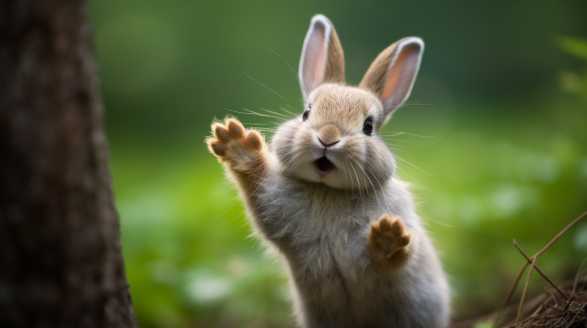
How Many Toes Do Rabbits Have
How many toes do rabbits have? Let’s find out. Rabbits, those floppy-eared creatures loved by many, may seem ordinary at first glance. However, did you know that these furry friends possess an intriguing secret about their feet? Contrary to popular belief, rabbits do not have just four toes like most animals; they actually possess five! […]
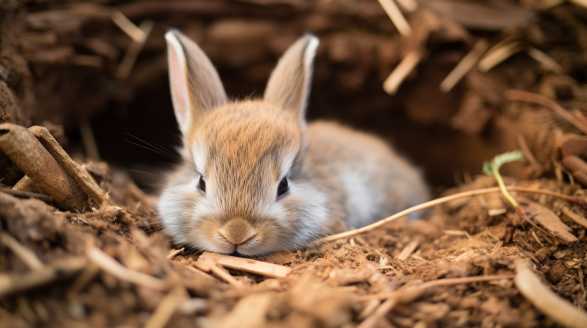
Is Aspen Bedding Safe For Rabbits
Introduction Hey there rabbit owners! Are you looking for the safest and most comfortable bedding option for your fluffy friend? we’ll be diving into the topic of aspen bedding for rabbits and exploring its safety and benefits. As a passionate rabbit owner myself, I understand the importance of choosing the right bedding material for our […]
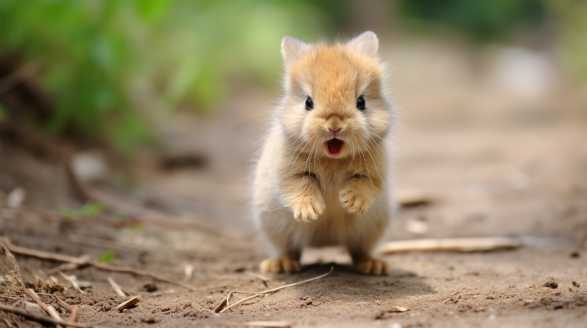
Are Rabbits Dangerous
Introduction Hey there, fellow animal lovers! Are you ready for an exciting adventure into the world of rabbits? But there’s so much more to them than meets the eye! Today, we’re going to dive deep into the behavior, potential dangers, and ways to create a safe environment for rabbits and their human companions. From their […]
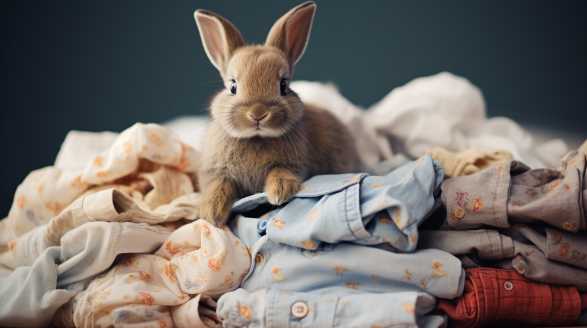
Why Do Rabbits Bite Your Clothes
Introduction Hey there, rabbit owners! We know how delightful it is to have these fluffy creatures hopping around our homes. Can you relate? Don’t worry, we’ve got your back! we’re diving into the fascinating world of rabbit behavior and tackling the topic of fabric chewing head-on. We’ll explore the reasons behind why rabbits have a […]
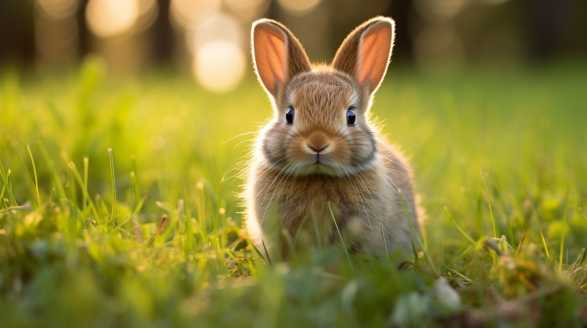
How To Stop Rabbits From Destroying Your Lawn
Introduction Hey there, fellow gardeners and lawn enthusiasts! We all love the sight of a perfectly manicured lawn, don’t we? That’s why I’m here today to share some fantastic solutions to help you reclaim your lawn from these furry invaders. we’ll explore a variety of chemical-free remedies and DIY methods to keep rabbits away from […]
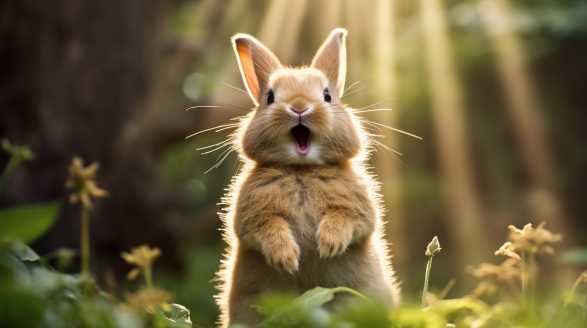
How Many Teeth Do Rabbits Have
How many teeth do rabbits have? Let’s find out. Rabbits, adorable and endearing creatures, have quite the dental arsenal hiding behind their furry exteriors. Contrary to popular belief, these herbivorous mammals possess an impressive set of teeth. With a grand total of 28 teeth, rabbits have incisors, premolars, and molars, all strategically placed to munch […]
